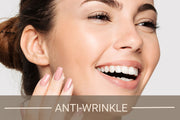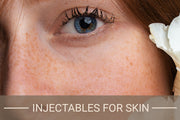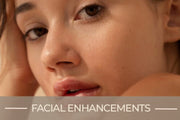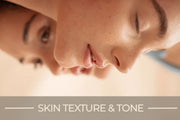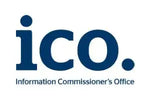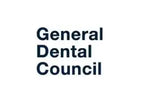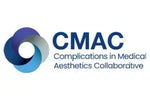Botox Injections Aftercare

Content Verification



✨ Quick Summary ✨
- 💉 Botox helps reduce wrinkles and fine lines for a youthful glow.
- ⏳ Results typically show within a few days and last 3-6 months.
- 🛑 Avoid touching or massaging the treated area for at least 24 hours.
- 🧴 Stay hydrated and follow aftercare instructions for the best results.
💡 Key Advice & Tips from Our Experts 💡
- 🔎 Always go to a qualified professional for Botox treatments.
- 💤 Keep your head elevated and avoid lying down for at least 4 hours post-treatment.
- 🚫 Steer clear of intense exercise, saunas, and alcohol for 24 hours.
- 😊 Be patient – full results may take up to two weeks to appear!
Botox treatments have become a widely recognised option for reducing the appearance of fine lines and wrinkles, offering a non-surgical approach to anti-ageing. These injections work by temporarily relaxing targeted muscles, which helps to smooth dynamic wrinkles and achieve a more youthful look. While Botox injections are relatively quick and minimally invasive, proper aftercare is crucial to maximise the benefits and minimise potential complications.
In this article, we’ll explore everything you need to know about Botox aftercare, guided by insights from experienced professionals. From understanding what to avoid in the first 24 hours to practical tips on maintaining results, we’ll provide clear and medically-informed guidance to help you make informed decisions about your post-treatment routine.
By following expert advice and adopting safe aftercare practices, you can enhance the effectiveness and longevity of Botox anti-wrinkle injections. Read on for a comprehensive guide to ensuring your treatment delivers the best possible results.
What Not to Do 24 Hours After Botox
Proper care in the first 24 hours following Botox treatments is critical to ensuring optimal results. During this time, the injected Botox needs to settle into the targeted muscles without interference. Neglecting aftercare can compromise the effectiveness of the treatment and increase the risk of side effects.
Avoid Physical Activities
One of the key recommendations is to avoid vigorous physical activities, such as heavy exercise or activities that increase blood flow to the face. “Botox treatments need time to settle. Any excessive movement or pressure in the first 24 hours can compromise the results,” explains Dr. Laura Geige, Medical Director and Skin Expert from It’s Me & You Clinic. Physical exertion may cause the product to migrate from the targeted area, leading to suboptimal results or unintended side effects.
Avoid Lying Down Flat
Refrain from lying down flat for at least 4–6 hours after the procedure. This minimises the risk of Botox spreading to adjacent muscles, which could cause unwanted effects like drooping. Instead, remain upright to allow the treatment to work as intended.
Avoid Alcohol and Certain Skincare Products
Alcohol consumption should be avoided during this time, as it can increase bruising and swelling at the injection sites. Similarly, skincare products containing active ingredients like retinol or exfoliating acids can irritate the skin and delay recovery. Opt for gentle, hydrating products instead.
Avoid Excessive Facial Movements
Although some mild facial movements may be encouraged (if advised by your practitioner), excessive or vigorous scrunching, frowning, or rubbing the treated area should be avoided. This reduces the risk of displacing the product and ensures better absorption.
Can Botox Migrate After 3 Days?
One common concern among patients is whether Botox can migrate after a few days. While the risk of migration significantly decreases after the first 24 hours, improper care in the initial recovery period can still affect the treatment outcome. Understanding the factors that contribute to Botox migration is crucial for achieving optimal and safe results.
The Risk of Botox Migration
Botox migration occurs when the injected product moves from the intended treatment area to adjacent muscles, potentially causing unintended effects, such as drooping eyelids or asymmetry. This is why careful aftercare is essential. “Proper placement by a skilled professional greatly reduces migration risk. However, following aftercare advice is equally critical,” advises Dr. Snieguole Geige, Medical Doctor and Senior Adviser. While skilled administration is foundational, your actions post-treatment play an important role.
How to Minimise Migration Risk
To further reduce the chance of migration after your Botox anti-wrinkle injections:
- Avoid Pressuring Treated Areas: Refrain from rubbing, massaging, or applying pressure to the injected areas for at least 3–4 days. This ensures the product remains in its designated location.
- Stay Upright: Avoid lying down flat, especially during the first 24 hours, as gravity helps keep the product in place.
- Gentle Facial Movements: While mild expressions may help absorption if advised, avoid vigorous facial gestures or frowning unnecessarily.
- Delay Facial Treatments: Postpone facials, chemical peels, or other cosmetic procedures on the treated area for at least a week. These can disrupt the settling process.
How Long Should I Avoid Lying Down After Botox?
Lying down too soon after receiving Botox injections can interfere with how the product settles into the targeted muscles. This precaution is essential to ensure that the treatment delivers the intended results while minimising the risk of complications.
Why Avoid Lying Down After Botox?
It is generally recommended to avoid lying down flat for at least 4–6 hours after your Botox treatment. During this time, staying upright allows gravity to help the product remain in the precise areas where it was injected. “Gravity plays a role in keeping Botox in place during the initial hours after treatment,” explains Dr. Giedre Narkiene, Dermatology Specialist. Lying down prematurely may cause the product to shift, potentially affecting surrounding muscles and leading to unintended outcomes such as drooping or asymmetry.
Tips for Resting Comfortably
If you need to rest during the initial recovery period, consider reclining in a chair rather than lying flat. Supportive pillows can help you maintain an elevated position comfortably. Planning your Botox appointment earlier in the day can also reduce the temptation to lie down soon after the procedure.
Why No Retinol after Botox?
After receiving Botox injections, your skin requires a gentle approach to healing and recovery. While Botox itself targets underlying muscles, the injection process can leave your skin more sensitive in the days following treatment. Using harsh skincare ingredients, such as retinol or exfoliants, during this time may irritate the treated areas and compromise the healing process.
Why Avoid Retinol and Exfoliants?
Retinol and similar active ingredients are powerful tools in skincare, often used to promote cell turnover and improve skin texture. However, these ingredients can cause redness, peeling, and heightened sensitivity when applied to skin that is already recovering from Botox injections. Additionally, retinol can exacerbate any minor redness or swelling around the injection sites, delaying your skin’s natural healing process. “Your skin is more sensitive after Botox, which means it’s important to avoid anything that could further irritate it. Retinol and exfoliating acids can disrupt the healing process and increase redness or discomfort. Instead, focus on products that soothe and hydrate your skin during recovery,” advises Dr. Laura Geige.
Retinol-Free Skincare Recommendations
For at least 48 hours after treatment, switch to a simple skincare routine focused on hydration and soothing. Look for gentle, fragrance-free cleansers and moisturisers that support the skin barrier. Ingredients such as hyaluronic acid, ceramides, and aloe vera can provide hydration and comfort without causing irritation. Sunscreen is also essential during this period to protect the skin from harmful UV rays, as sensitivity can increase post-treatment.
When Can I Exercise Again After Botox?
Exercise is an essential part of many people’s routines, but after receiving Botox injections, it’s important to temporarily pause intense physical activity. Strenuous workouts can interfere with the treatment's effectiveness and increase the risk of complications. Understanding when and how to safely reintroduce exercise is key to maximising the benefits of your Botox anti-wrinkle injections.
Recommended Waiting Period
It is generally advised to avoid intense exercise for at least 24 hours following Botox treatment. Vigorous physical activity increases circulation and blood flow, which may cause the product to migrate from the targeted muscles and reduce its effectiveness. “Exercise increases circulation, which can reduce the effectiveness of Botox anti-wrinkle injections if done too soon. Additionally, sweating and repetitive movements can irritate the treated areas, potentially compromising the results,” explains Dr. Rimas Geiga, Medical Doctor and Registered Dietician. By allowing the product to settle fully, you ensure it can work as intended without disruption.
Gentle Activities to Consider
If you’re eager to remain active, consider light activities such as walking or stretching. These low-impact options minimise strain on your body and reduce the risk of product migration. Avoid activities that involve excessive bending, heavy lifting, or high-intensity movements until you’ve passed the recommended waiting period.
Taking a short break from strenuous exercise allows your body to heal properly and ensures that your Botox treatments deliver the best possible results. Once cleared by your practitioner, you can gradually resume your regular fitness routine.
What Stops Botox from Working?
While Botox injections are highly effective for reducing the appearance of wrinkles and fine lines, certain factors can interfere with their success. Understanding these factors can help ensure you get the most out of your Botox anti-wrinkle treatments.
Factors That Can Affect Botox Results
Botox may not work as intended due to a variety of reasons, including incorrect injection techniques, individual immune responses, or specific lifestyle habits. Incorrect placement of the product or using insufficient dosage can result in suboptimal results. Additionally, some individuals may develop antibodies to Botox, making them resistant to its effects over time.
Lifestyle choices also play a significant role. Smoking, dehydration, and high levels of stress can affect skin quality and potentially diminish the effectiveness of Botox. “Hydration and avoiding certain medications can support optimal Botox results. Staying hydrated helps maintain skin elasticity, while some medications, such as blood thinners, may interfere with the treatment’s efficacy,” explains Dr. Snieguole Geige.
How to Maximise Results
To support the effectiveness of Botox, follow your practitioner’s aftercare instructions closely. Maintain a balanced diet, drink plenty of water, and avoid alcohol for at least 24 hours post-treatment. Refrain from activities that could disrupt the product, such as vigorous exercise or massaging the treated areas.
How Soon After Botox Can, I Apply Makeup?
After receiving Botox injections, many patients wonder when it is safe to resume wearing makeup. While Botox treatments involve minimal downtime, it’s essential to allow the skin to recover properly before applying any products to avoid irritation or disrupting the treatment.
When Can Makeup Be Safely Applied?
It is recommended to wait at least 4 hours after your Botox anti-wrinkle injections before applying makeup. This waiting period ensures that the injection sites have had time to close and reduces the risk of product migration or irritation. Applying makeup too soon can introduce bacteria to the treated areas, potentially leading to complications like redness or swelling. “Use clean brushes and avoid heavy pressure to prevent irritation, ”advises Dr. Giedre Narkiene. “Your skin is particularly sensitive immediately after Botox, so gentle application is crucial to avoid disrupting the treatment.”
Makeup Products to Use or Avoid
When resuming makeup, opt for lightweight, non-comedogenic products that minimise the risk of clogging pores or causing irritation. Mineral-based foundations and powders are excellent choices during this period. Avoid heavy or oil-based products that can suffocate the skin and delay healing.
It’s also important to clean your makeup tools thoroughly before use to reduce the risk of bacterial contamination. For added safety, consider skipping makeup entirely for 24 hours to allow your skin to fully recover.
What Can Ruin Botox?
Botox injections are designed to reduce the appearance of wrinkles and provide a smoother, more youthful look. However, certain activities and habits can compromise the effectiveness of your treatment, potentially diminishing results or causing them to wear off prematurely.
Activities and Habits to Avoid
Smoking is one of the most detrimental habits that can ruin Botox results. It accelerates skin ageing, reduces circulation, and hinders the skin’s ability to maintain elasticity. Similarly, excessive sun exposure damages the skin, causing it to lose collagen and elasticity, which can counteract the benefits of Botox anti-wrinkle treatments.
Poor skincare routines, such as failing to cleanse the skin properly or skipping sunscreen, can also impact the longevity of Botox results. Exposure to environmental pollutants and UV rays without proper protection can lead to premature breakdown of the skin and faster fading of Botox effects. “A holistic approach to skincare supports the longevity of Botox for wrinkles,” explains Elisabeth Leclerc, Fashion Expert. “Incorporating sunscreen, antioxidants, and hydrating products into your routine not only enhances the results but also promotes overall skin health.”
Protecting Your Results
To protect your Botox treatments, adopt a consistent skincare routine that includes daily sunscreen with at least SPF 30, antioxidants like vitamin C, and moisturising products. Avoid harsh exfoliants or active ingredients for the first week post-treatment to allow your skin to recover.
When Can I Sleep on My Side After Botox?
Sleeping position is an often-overlooked aspect of Botox aftercare, yet it plays an important role in ensuring the treatment works as intended. Side-sleeping too soon after Botox injections can disrupt the settling process, potentially leading to uneven results or unintended migration of the product.
Why Side-Sleeping Should Be Avoided
It is generally recommended to avoid sleeping on your side for at least 24–48 hours after Botox. Pressure on the treated areas can cause the product to spread to unintended muscles, which may result in asymmetry or other complications. “Sleeping on your back ensures the product settles evenly,” advises Dr. Laura Geige. “Side-sleeping places direct pressure on the injection sites, which can compromise the precision and effectiveness of your Botox anti-wrinkle injections.”
Tips for Safe Sleeping
To protect your results, try sleeping on your back with your head slightly elevated using a pillow. If you’re naturally a side sleeper, placing supportive pillows around your body can help keep you in a comfortable back-sleeping position. Additionally, scheduling your Botox appointment earlier in the day can give you more time to adjust before bedtime.
Should You Scrunch Your Face After Botox?
Facial movements immediately following Botox injections are a topic of frequent discussion. While it’s typically recommended to avoid excessive or vigorous movements, some practitioners may advise gentle facial exercises to optimise the treatment's absorption. Understanding when and how to move your face after Botox is key to achieving the best results.
Why Mild Facial Movement May Be Recommended
In certain cases, mild facial movements—such as frowning or raising your eyebrows—may help distribute the Botox evenly within the targeted muscles. This is typically advised for treatments focused on dynamic wrinkles, like frown lines. “Controlled movement can help distribute Botox effectively in some cases,” notes Dr. Giedre Narkiene. “However, it’s essential to follow your practitioner’s guidance, as overdoing it can have the opposite effect and disrupt the treatment’s precision.”
When to Avoid Excessive Movement
Despite the potential benefits of light movements, excessive scrunching or vigorous facial expressions should be avoided for at least 24 hours. This reduces the risk of product migration to unintended areas, ensuring that the treatment works exactly as planned.
Follow Your Practitioner’s Advice
Since recommendations for facial movements can vary depending on the area treated and the individual’s needs, it’s crucial to consult with your practitioner. If advised to perform mild facial exercises, do so gently and only within the specified timeframe.
Does Anything Make Botox Wear Off Faster?
While Botox injections are a highly effective solution for reducing the appearance of wrinkles, certain lifestyle factors can shorten their duration. Understanding these factors can help you take proactive steps to maintain the results of your Botox anti-wrinkle treatments for as long as possible.
Lifestyle Habits That May Shorten Botox's Effects
Certain habits, such as smoking, can accelerate skin ageing and reduce the longevity of Botox treatments. Smoking weakens the skin’s structure and reduces its ability to retain the effects of anti-ageing treatments. Similarly, frequent sun exposure can degrade collagen, cause skin damage, and potentially diminish Botox's effects more quickly.
High metabolism is another factor that can contribute to faster Botox wear-off. Individuals with higher metabolic rates may break down the product more rapidly than others. Additionally, habits like excessive exercise or exposure to extreme heat, such as saunas, can increase circulation and potentially affect the treatment’s longevity.
How to Support Longer-Lasting Results
“A balanced diet and stress management can help Botox last longer,” explains Dr. Rimas Geiga. “Proper hydration, a diet rich in antioxidants, and maintaining a low-stress lifestyle all contribute to healthier skin, which supports the effects of Botox.” Incorporating skincare products with hydrating and protective properties, like hyaluronic acid and sunscreen, can also help maintain your treatment results.
What Are the Signs of Botox Side Effects or Complications to Watch For?
Botox injections are generally considered safe when performed by a qualified practitioner, but like any medical treatment, there is a potential for side effects or complications. Being aware of these signs can help you identify when to seek professional advice.
Common Side Effects
Mild side effects are normal and usually resolve within a few days. These may include:
- Swelling or redness at the injection sites.
- Bruising, which can vary depending on individual skin sensitivity.
- A feeling of tightness or heaviness in the treated areas.
These reactions are typically mild and should not cause concern unless they persist or worsen.
Signs of Complications
In rare cases, complications can arise that require medical attention. These may include:
- Drooping eyelids or eyebrows, which can occur if the Botox spreads to unintended muscles.
- Asymmetry in facial expressions that persists beyond the settling period.
- Difficulty swallowing, speaking, or breathing, which may indicate an allergic reaction or other adverse response.
“Seek immediate medical attention if you notice significant asymmetry or difficulty swallowing,” advises Dr. Snieguole Geige. “Although rare, these symptoms may indicate a serious complication that requires prompt evaluation.”
When to Consult Your Practitioner
If you experience any unusual symptoms or have concerns about your treatment, contact your practitioner without delay. Regular follow-ups can also help ensure that your Botox anti-wrinkle injections deliver the best results safely.
Why Can't You Shower After Botox?
Showering may seem harmless after Botox injections, but certain precautions are necessary to ensure the treatment settles effectively. The primary concern is avoiding heat and pressure, which can interfere with the results and potentially cause complications.
Why Avoid Hot Showers or Saunas?
Hot showers, saunas, and steam rooms should be avoided for at least 24 hours after receiving Botox anti-wrinkle injections. Heat increases blood flow to the treated areas, which can cause the Botox to migrate away from the target muscles. This could lead to unintended effects, such as reduced effectiveness or uneven results. Additionally, the heat may exacerbate swelling or redness around the injection sites.
Tips for Gentle Cleansing Post-Treatment
While hot showers are off-limits, gentle cleansing routines are encouraged to maintain hygiene without disrupting the Botox treatment:
- Use lukewarm water to wash your face, avoiding high temperatures.
- Gently pat your skin dry with a clean towel instead of rubbing.
- Avoid vigorous scrubbing, exfoliation, or the use of harsh cleansers.
- Opt for a fragrance-free and hydrating cleanser to soothe the skin.
Should I Move My Forehead After Botox?
After receiving Botox injections, patients often wonder whether they should move their forehead or perform facial exercises. While Botox targets specific muscles to relax them and reduce the appearance of wrinkles, post-treatment movement recommendations may vary based on individual needs and the area treated.
Should You Move Your Forehead?
In some cases, light facial exercises such as gently raising your eyebrows or frowning might be recommended to help the Botox settle more effectively into the targeted muscles. However, this should only be done if explicitly advised by your practitioner. “Follow your injector’s advice on post-treatment facial movement,” explains Dr. Laura Geige. “Controlled, gentle movements can sometimes enhance the results, but overdoing it or making excessive expressions may interfere with the treatment.”
When to Avoid Movement
If your practitioner does not recommend facial exercises, avoid unnecessary forehead movements for at least 24 hours. Excessive expressions or touching the treated areas can disrupt the placement of the product and lead to less precise results.
Consult Your Practitioner
Always defer to the guidance of your Botox provider regarding post-treatment care. Each case is unique, and your practitioner will provide tailored advice to help you achieve the best outcomes from your anti-wrinkle treatments.
What Helps Botox Stay Longer?
Maximising the longevity of your Botox injections involves more than just following aftercare instructions. Incorporating healthy lifestyle habits and a proactive skincare routine can help you enjoy the results of your Botox anti-wrinkle treatments for an extended period.
Skincare Routines for Prolonging Botox Results
Maintaining a consistent skincare routine is essential for supporting the effects of Botox. Gentle cleansing, daily moisturising, and the use of antioxidant-rich products can enhance skin health and improve the longevity of the treatment. “Using antioxidant-rich products can support skin health and prolong Botox effects,” notes Dr. Giedre Narkiene. “Ingredients like vitamin C and E protect the skin from free radicals, which can accelerate the breakdown of Botox.”
Sun Protection and Hydration
Exposure to UV rays can damage collagen and speed up the ageing process, reducing the effectiveness of Botox over time. Applying sunscreen with SPF 30 or higher daily is crucial to protecting your skin and extending your results. Staying hydrated is equally important, as well-moisturised skin retains elasticity and supports a more youthful appearance.
Healthy Lifestyle Habits
Avoiding habits such as smoking and excessive alcohol consumption can significantly improve your skin’s overall health. A balanced diet rich in fruits, vegetables, and omega-3 fatty acids also contributes to better skin quality and longer-lasting Botox effects. Regular, moderate exercise can promote circulation and skin health without the excessive strain that might interfere with the treatment.
Are There Restrictions on Flying After Botox Treatment?
Flying after Botox treatments is a common concern for those who travel frequently. While air pressure and altitude changes during a flight do not directly affect Botox injections, certain precautions should be taken to ensure optimal results and minimise risks immediately after treatment.
Flying After Botox: Is It Safe?
Generally, flying shortly after Botox is considered safe, as the treatment targets specific muscles and does not rely on external factors like air pressure to settle. However, it’s advisable to avoid flying within the first 24 hours post-treatment. “Flying shortly after Botox is usually safe, but avoid it within the first 24 hours to reduce risks,” advises Dr. Snieguole Geige. “Staying grounded during this initial period helps minimise potential swelling or bruising and allows the product to settle effectively.”
Why Wait Before Flying?
The first 24 hours after Botox are crucial for ensuring the product remains in its targeted location. Activities such as lifting heavy luggage or prolonged head positioning during a flight can potentially disrupt the treatment. Additionally, dehydration caused by cabin air can affect skin quality, which is why it’s essential to stay hydrated during and after travel.
Tips for Travelling After Botox
If you must travel shortly after your treatment, consider these tips:
- Avoid pressing or rubbing the treated areas.
- Stay upright during the flight to prevent product migration.
- Drink plenty of water to keep your skin hydrated.
- Use a gentle moisturiser and sunscreen to protect your skin from environmental factors.
Final Thoughts on Botox Injection Aftercare
Navigating Botox aftercare can feel overwhelming, but every small effort ensures smoother, longer-lasting results. Questions and concerns are natural; they reflect a commitment to looking and feeling one's best. Embrace these expert-backed tips, trust certified professionals, and prioritise care. For those seeking Botox treatments in London or near their area, consulting a qualified practitioner is key to achieving safe, effective, and transformative results. Let this journey to timeless beauty inspire self-assured grace and confidence.
Disclaimer: This article is for informational purposes only and is not a substitute for professional medical advice. Always consult a qualified medical practitioner for personalised care and advice.

